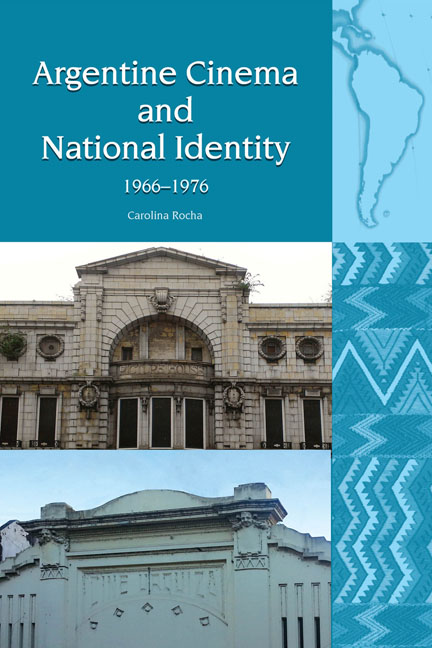Book contents
- Frontmatter
- In Memory of Paulina Piselli (1937–2017)
- Contents
- Acknowledgements
- Introduction
- Section I Argentine History and National Cinema, 1955–1976
- Section II The Cinematic Gauchesque
- Section III Representing Founding Fathers
- 10 Looking for a National Hero
- 11 Güemes, la tierra en armas
- 12 Bajo el signo de la patria
- 13 Juan Manuel de Rosas
- Conclusion
- Bibliography
- Index
11 - Güemes, la tierra en armas
from Section III - Representing Founding Fathers
- Frontmatter
- In Memory of Paulina Piselli (1937–2017)
- Contents
- Acknowledgements
- Introduction
- Section I Argentine History and National Cinema, 1955–1976
- Section II The Cinematic Gauchesque
- Section III Representing Founding Fathers
- 10 Looking for a National Hero
- 11 Güemes, la tierra en armas
- 12 Bajo el signo de la patria
- 13 Juan Manuel de Rosas
- Conclusion
- Bibliography
- Index
Summary
After the huge popularity of El santo, Torre Nilsson decided to make another film in the same line of biopic/historical films that had proven so successful at the box office: Güemes, la tierra en armas. To do so, he expanded on the life of a secondary character who appears in El santo, who was also a veritable founding father of Argentina: Martín Miguel de Güemes (1785–1821), an upper-class creole born in what today is northern Argentina. In the second decade of the nineteenth century, Güemes restlessly fought for the liberation of his patria chica [little fatherland] from Spanish rule, leading armies of gauchos. Starting in 1814, he supported San Martín's military mission, protecting the northern border from Spanish troops. In 1815, he became the first elected governor in what is today Argentina, a position he held until his death. He was acutely aware of the need for political organization by means of a constitution so that the liberated areas would not fall into anarchy. Torre Nilsson, who had enjoyed remarkable success with Martín Fierro and El santo, here undertook a project that not only coincidentally depicted gauchos, but also included a founding father. Yet Güemes's portrayal posed an important challenge as the filmmaker admitted: ‘considero que Güemes es una de nuestras figuras históricas poco conocidas’ [I believe Güemes is one of our lesser known historical figures] (‘Ante,’ 1971, non. pag.). Almost 30 years later, historian Luis Colmenares issued a similar statement (1998, 7). On the one hand, the public's lack of familiarity with the salteño [inhabitant of the province of Salta] leader gave the filmmaker freedom in his depiction, given that he did not have to compete with an image of the caudillo already set in the minds of Argentine spectators. On the other hand, because of Argentines’ unfamiliarity with Güemes, Torre Nilsson faced the task of making him relevant to twentieth-century, urban, middle-class viewers: ‘Considero que al mismo tiempo de rememorar hechos históricos, la película es de gran actualidad porque presenta la lucha del pueblo por afirmar su independencia y buscar justicia. Güemes fue uno de los primeros caudillos populares’ [I believe that although the film revisits historical events, it is very relevant as it presents the people's fights to assert its independence and seek justice. Güemes was one of the first popular caudillos] (‘Ante,’ 1971, non. pag.).
- Type
- Chapter
- Information
- Argentine Cinema and National Identity (1966–1976) , pp. 159 - 179Publisher: Liverpool University PressPrint publication year: 2018



